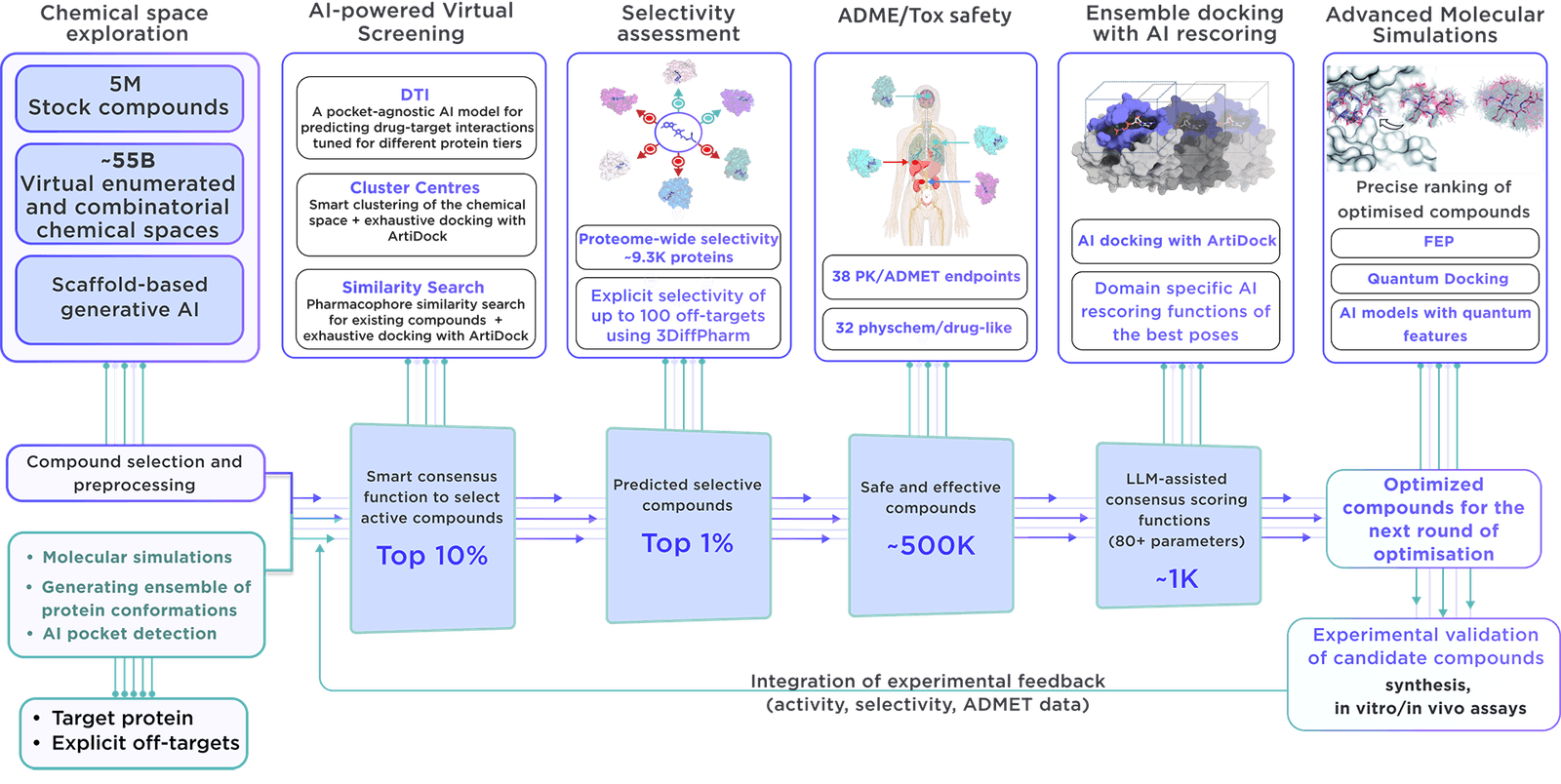Focused On-demand Libraries - Receptor.AI Collaboration
Explore the Potential with AI-Driven Innovation
This extensive focused library is tailor-made using the latest virtual screening and parameter assessment technology, operated by the Receptor.AI drug discovery platform. This technique is more effective than traditional methods, offering compounds with improved activity, selectivity, and safety.
We carefully select specific compounds from a vast collection of over 60 billion molecules in virtual chemical space. Reaxense helps in synthesizing and delivering these compounds.
In the library, a selection of top modulators is provided, each marked with 38 ADME-Tox and 32 parameters related to physicochemical properties and drug-likeness. Also, every compound comes with its best docking poses, affinity scores, and activity scores, providing a comprehensive overview.
We use our state-of-the-art dedicated workflow for designing focused libraries.
Our methodology leverages molecular simulations to examine a vast array of proteins, capturing their dynamics in both isolated forms and in complexes with other proteins. Through ensemble virtual screening, we thoroughly account for the protein's conformational mobility, identifying critical binding sites within functional regions and distant allosteric locations. This detailed exploration ensures that we comprehensively assess every possible mechanism of action, with the objective of identifying novel therapeutic targets and lead compounds that span a wide spectrum of biological functions.
Our library is unique due to several crucial aspects:
- Receptor.AI compiles all relevant data on the target protein, such as past experimental results, literature findings, known ligands, and structural data, thereby enhancing the likelihood of focusing on the most significant compounds.
- By utilizing advanced molecular simulations, the platform is adept at locating potential binding sites, rendering the compounds in the focused library well-suited for unearthing allosteric inhibitors and binders for hidden pockets.
- The platform is supported by more than 50 highly specialized AI models, all of which have been rigorously tested and validated in diverse drug discovery and research programs. Its design emphasizes efficiency, reliability, and accuracy, crucial for producing focused libraries.
- Receptor.AI extends beyond just creating focused libraries; it offers a complete spectrum of services and solutions during the preclinical drug discovery phase, with a success-dependent pricing strategy that reduces risk and fosters shared success in the project.
Receptor.AI
P56377
UPID:
AP1S2_HUMAN
ALTERNATIVE NAMES:
Adaptor protein complex AP-1 subunit sigma-1B; Adaptor-related protein complex 1 subunit sigma-1B; Clathrin assembly protein complex 1 sigma-1B small chain; Golgi adaptor HA1/AP1 adaptin sigma-1B subunit; Sigma 1B subunit of AP-1 clathrin; Sigma-adaptin 1B; Sigma1B-adaptin
ALTERNATIVE UPACC:
P56377; B4DSU4; O95326; Q9H2N6

